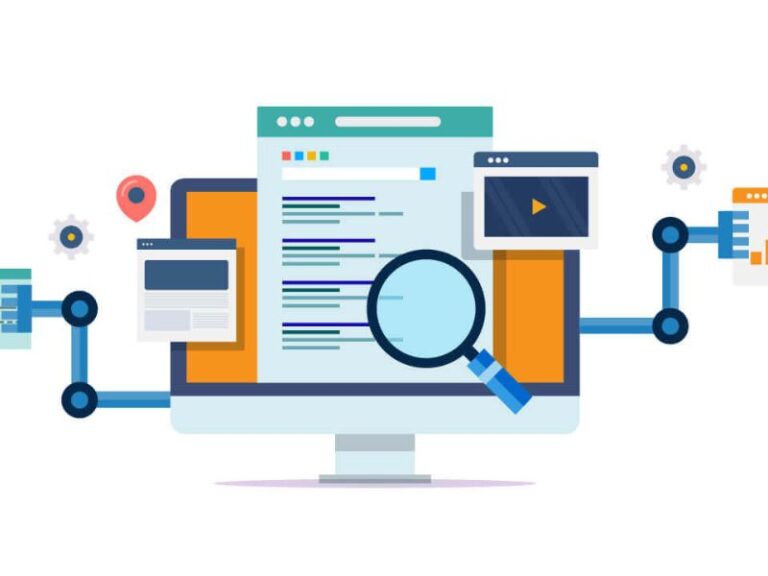Automation is no longer a futuristic concept—it’s today’s competitive edge. As technology continues to evolve at breakneck speed, businesses across industries must adapt or risk falling behind. Understanding the latest Automation Trends is crucial to staying ahead of the curve, boosting productivity, and improving efficiency. In this in-depth guide, we’ll explore the key automation developments shaping the future of work and how they will directly impact your business operations.
Why Automation Trends Matter More Than Ever
Automation has moved beyond basic task replacement. Today’s Automation Trends involve sophisticated technologies like artificial intelligence, machine learning, robotic process automation, and hyperautomation. These trends are not just influencing how work is done; they’re redefining business strategies.
Furthermore, automation is empowering businesses to:
-
Reduce operational costs
-
Eliminate human error
-
Improve customer experience
-
Scale with fewer resources
So, what are the current Automation Trends that deserve your attention? Let’s dive in.
1. Hyperautomation: The New Frontier
One of the most significant Automation Trends to emerge in recent years is hyperautomation. This trend involves integrating advanced technologies like AI, RPA (Robotic Process Automation), and low-code platforms to automate as many processes as possible.
How Hyperautomation Impacts Business
-
Allows end-to-end process automation
-
Increases operational agility
-
Enhances data accuracy and decision-making
Hyperautomation is especially impactful for businesses seeking to scale quickly while maintaining quality and speed. Moreover, it ensures that automation isn’t just about individual tasks—but entire workflows.
2. AI-Powered Automation Is Becoming Mainstream
Another dominant force among Automation Trends is artificial intelligence. From smart chatbots to advanced data analytics, AI-powered automation is taking over both customer-facing and back-end operations.
Applications of AI in Automation
-
Predictive analytics for inventory and sales
-
Natural language processing for chatbots
-
AI-assisted hiring and onboarding
Because AI continuously learns and evolves, businesses can rely on it for smarter automation, reducing the need for constant manual oversight.
3. Robotic Process Automation (RPA) Expands Its Reach
RPA is not a new concept, but it remains one of the most influential Automation Trends. This technology uses software robots to handle repetitive, rule-based tasks, allowing employees to focus on more value-driven work.
Key Benefits of RPA
-
Cost savings through labor reduction
-
Enhanced compliance and accuracy
-
Increased processing speed
Organizations across finance, HR, and customer service are integrating RPA to streamline workflows and boost productivity.
4. Low-Code and No-Code Automation Platforms
Low-code and no-code platforms are becoming indispensable tools in the world of Automation Trends. These tools allow even non-technical employees to build automated workflows and applications, reducing the burden on IT departments.
Implications for Your Business
-
Faster deployment of automation solutions
-
Encourages innovation at all levels
-
Reduces IT bottlenecks
Additionally, this trend democratizes automation, empowering every team to solve its own process inefficiencies.
5. Intelligent Document Processing (IDP)
Another emerging trend in automation is Intelligent Document Processing. Businesses deal with countless documents—contracts, invoices, receipts—and IDP uses AI to extract, categorize, and validate data from these documents automatically.
Why IDP Matters
-
Saves time spent on manual data entry
-
Improves data accuracy and compliance
-
Enables seamless integration with other automation systems
As document automation grows, companies can process larger volumes of information without scaling their workforce.
6. Cloud Automation Gains Momentum
Among all the Automation Trends, cloud automation is particularly relevant for businesses undergoing digital transformation. As more operations move to the cloud computing, automating these services ensures efficiency, scalability, and resilience.
Examples of Cloud Automation
-
Auto-scaling cloud resources
-
Backing up data automatically
-
Automating software updates and security patches
Incorporating cloud automation not only saves time but also ensures business continuity during unexpected disruptions.
7. Conversational AI and Virtual Assistants
Businesses are increasingly turning to conversational AI to automate customer interactions. This is one of the Automation Trends transforming customer service departments worldwide.
What Conversational AI Can Do
-
Handle customer queries 24/7
-
Provide personalized product recommendations
-
Collect customer feedback and analytics
Because these virtual assistants learn from user behavior, they become more effective over time, offering a better customer experience with fewer resources.
8. Automation in Cybersecurity
As cyber threats grow in sophistication, automation is becoming a vital component of cybersecurity. This is one of the lesser-known but rapidly growing Automation Trends worth exploring.
Benefits of Cybersecurity Automation
-
Detects threats in real-time
-
Automates incident response
-
Reduces false positives
Automated security systems can respond faster than human teams, making them essential for businesses that prioritize data protection.
9. Automation in Supply Chain and Logistics
Global disruptions have shown us just how fragile supply chains can be. In response, one of the most critical Automation Trends is the automation of supply chain and logistics operations.
Impact on Business Operations
-
Real-time tracking of goods and shipments
-
Automated demand forecasting
-
Streamlined inventory management
Not only does this reduce delays and costs, but it also ensures better customer satisfaction through timely deliveries.
10. Automation for ESG and Sustainability Reporting
Companies are under increasing pressure to disclose their environmental, social, and governance (ESG) metrics. Automation is now being used to gather and analyze ESG data more efficiently.
Why This Trend Is Growing
-
Supports regulatory compliance
-
Enhances corporate transparency
-
Improves sustainability tracking
This is one of the newer Automation Trends, but it’s gaining momentum as companies focus more on responsible business practices.
11. Personalized Marketing Automation
Marketing departments are leveraging automation to deliver tailored experiences to consumers. With AI, machine learning, and real-time data, businesses can now create hyper-personalized campaigns.
Marketing Automation in Action
-
Trigger-based email workflows
-
Dynamic content generation
-
Behavior-driven customer journeys
Because personalized experiences drive engagement, automation here boosts both customer loyalty and ROI.
12. Integration of IoT and Automation
The Internet of Things (IoT) continues to merge with automation, particularly in manufacturing, agriculture, and healthcare. This hybrid approach is among the most powerful Automation Trends transforming real-world operations.
IoT-Driven Automation Examples
-
Smart sensors for predictive maintenance
-
Automated climate control in farming
-
Remote patient monitoring in healthcare
Together, IoT and automation create smarter, more responsive systems that reduce waste and enhance outcomes.
13. Human-in-the-Loop Automation
While full automation is ideal in many cases, some workflows still benefit from human intervention. Human-in-the-loop (HITL) automation enables machines to handle the heavy lifting while humans make critical decisions.
When HITL Makes Sense
-
Ethical or complex decisions
-
Quality control in creative processes
-
Safety-critical operations
This balance of automation and human oversight ensures optimal results without sacrificing flexibility or judgment.
14. Democratization of Automation Across Departments
Automation is no longer limited to IT or operations. Every department—from HR to sales—is adopting automation solutions tailored to their specific needs. This widespread adoption is one of the most inclusive Automation Trends yet.
Departmental Automation Use Cases
-
HR: Automated onboarding and payroll
-
Sales: Lead scoring and follow-up reminders
-
Finance: Automated invoice processing and reconciliation
As automation becomes more accessible, every function within the business stands to benefit.
15. Continuous Learning and Adaptive Systems
Finally, among the most transformative Automation Trends is the rise of systems that continually learn and improve over time. These adaptive systems use real-time feedback to evolve without human input.
Advantages of Adaptive Automation
-
Improved accuracy over time
-
Greater customization and personalization
-
Enhanced ROI through optimization
By investing in adaptive automation, businesses can future-proof their operations and remain competitive for years to come.
How to Prepare for the Future of Automation Trends
To successfully adopt these Automation Trends, your business should:
-
Conduct a thorough audit of existing processes
-
Prioritize automation opportunities based on ROI
-
Involve key stakeholders across departments
-
Invest in employee training and upskilling
-
Start small and scale strategically
Automation is not a one-size-fits-all solution. Therefore, aligning automation efforts with your unique business goals is essential.
Final Thoughts:
The future belongs to businesses that embrace change—and Automation Trends are a major part of that change. Whether you’re a small startup or a global enterprise, automation can help you operate smarter, faster, and more efficiently.
From hyperautomation to AI-driven workflows, from supply chain automation to ESG compliance tools, the landscape is rich with opportunity. By staying informed and strategically adopting these trends, you’ll be well-equipped to lead in your industry.






